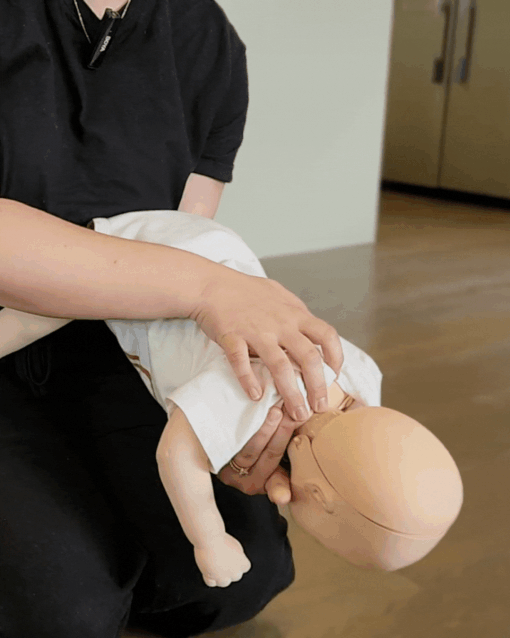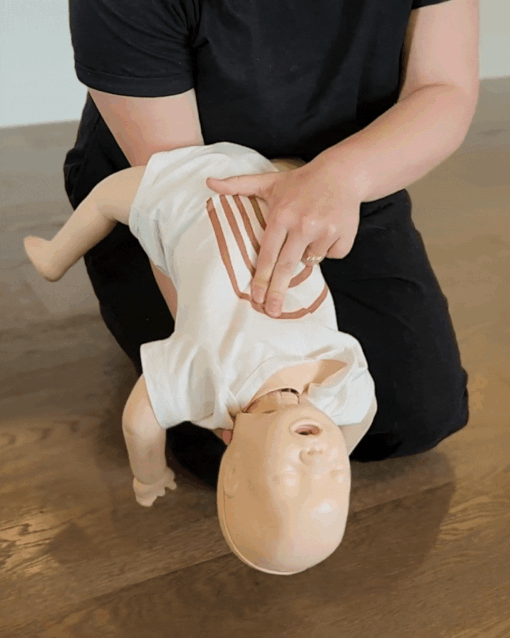Starting solids safety

Around 35% of new eaters will have a choking event. Charlotte Young from & Breathe First Aid shares how to reduce the risk and what to do.
Starting solids with your baby is an exciting milestone, but for many parents, it also comes with a bit of anxiety. The idea of your child choking on food is a scary thought. Understanding why new eaters are at a higher risk of choking help you learn why it’s vital to serve safe foods and learning how to do choking first aid will mean you can act quickly and correctly.
Choking on food - why this is more likely in new eaters small airways
Babies are more prone to choking because they have smaller, narrower airways than older children and adults. Even small pieces of food can block their airway and stop them from being able to breathe. Since their throats and windpipes are still developing, food that might pass easily for an adult can quickly become a choking hazard for a baby.
Immature chewing and swallowing skills
When starting solids, babies chewing and swallowing skills are still immature. They don't have molars at this age (these finish coming in at around three), so they rely on their gums and front teeth to mash food. New eaters are also learning how to use the 20 muscles needed to coordinate swallowing.
 Image from Plunket
Image from Plunket
Easily distracted
Babies are naturally curious and can be easily distracted during meals, which increases the risk of choking. Whether it's a toy, a sibling, or simply their surroundings, distractions can cause them to lose focus on chewing and swallowing. They might try to talk, laugh, or play while eating, making it more likely that food could enter the airway incorrectly. Supervised, focused mealtimes are crucial to reducing the risk of choking for new eaters.
Signs your child needs choking first aid
It’s vital to know the signs of choking and when to start choking first aid. Parents should only start choking first aid if they choking with a non-effective cough, not if they are gagging or have an effective cough.
Signs of choking with a non-effective cough
- Inability to breathe or cry: If your baby is choking, they won’t be able to cry, make noise, or take a breath. Their airway is blocked, so they won’t be able to draw in air.
- Coughing weakly or silently: A weak or silent cough is a sign that your baby is struggling to get air in or out.
- Panicked or distressed look: Babies who are choking may look wide-eyed, frightened, or distressed. They might wave their arms or grasp at their throat in an effort to dislodge the food.
- Turning blue or pale: If your baby’s face, lips, or skin begins to turn blue it means they’re not getting enough oxygen.
- Loss of consciousness: If your baby’s airway remains blocked for too long, they may pass out due to lack of oxygen.
Steps of choking first aid - choking infant
If your baby has signs of choking with a non-effective cough you need to act quickly. Knowing how to apply infant choking first aid can save your child’s life.
1. Call for help: If the object isn’t coming out or your baby loses consciousness, call emergency services immediately. Continue providing choking first aid until professionals arrive.
2. Begin back blows: If your baby can’t breathe or make noise, hold them face down along your forearm, ensuring their head is lower than their chest. Using the heel of your hand, give five firm back blows between their shoulder blades. Check after every back blow if the item has come out

3. Chest thrusts: If the back blows don’t dislodge the object, turn your baby over onto their back, supporting their head. Using two fingers, apply five quick chest thrusts to the middle of their chest, just below the nipple line. Check every chest thrust if the item has come out.

4. Repeat: Alternate between five back blows and five chest thrusts until the object is cleared, emergency help arrives or your child becomes loses consciousness. If they lose consciousness start basic life support (CPR)
We know thought of your baby choking is understandably frightening, but with the right knowledge and preparation, you can learn to act quickly and correctly. The best way to prepare for a choking event is to recognise the signs quickly and feel confident in your choking first aid skills. It’s recommended parents do a first aid course at least six months before their baby starts solids. This means key information is top of mind, you can build muscle memory for back blows and chest thrust and any corrections can be made by experienced educators.
& Breathe First Aid provides immersive baby & child first aid courses for families. Learn life saving skills from paediatric ICU nurses in their small group classes. Head to andbreathefirstaid.co.nz and start your journey to confidence today.

